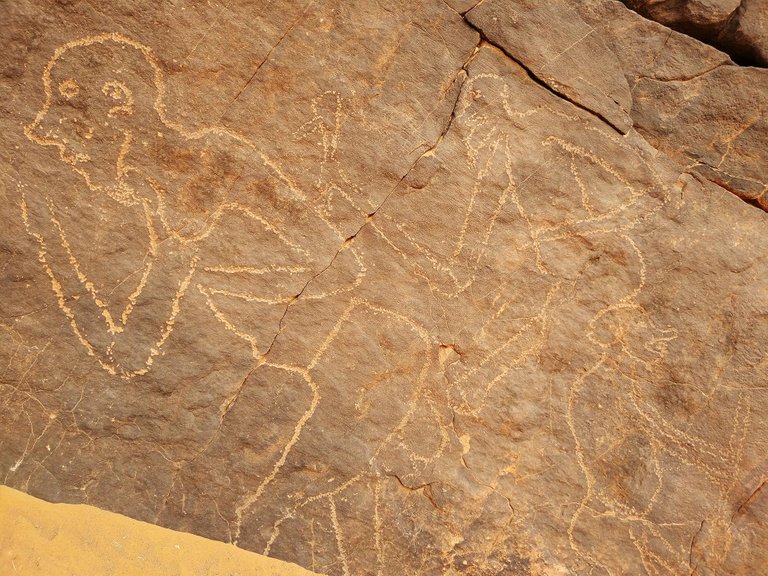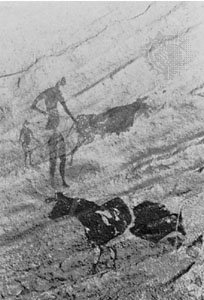
How much prehistory do you know? not much! me either!, anyway in this post we won't talk about prehistory we will talk about a specific photo taken from Tassili n'Ajjer, but first what is Tassili n'Ajjer?
Tassili n'Ajjer (state: Illizi) (Berber: Tasili n Ajjer, Arabic: طاسيلي ناجر, English: Plateau of the Rivers) is a heavily eroded sandstone rock formation in the Algerian section of the Sahara Desert, situated on a vast plateau, that encompasses south-east Algeria, western Libya and northern Niger. It features over 300 rock arches, dense clusters of eroded sandstone rock pillars and steep cliffs and gorges where water pools permanently at the surface.
Tassili n'Ajjer covers an area of over 72,000 km2 (28,000 sq mi).
Famous things about Tassili n'Ajjer:
Prehistoric rock paintings (and many engravings) were discovered first in 1910 and subsequently in the 1930s and ’60s. Scholars and archaeologists have estimated the age of the rock paintings through various indirect methods, including excavations, faunal studies, climatic studies, depiction of types of weapons and chariots, and inscriptions. The age of the earliest images is contested, but scholars generally agree that they date from approximately 7,000 years ago.
The rock paintings at Tassili fall into a series of major styles that form a chronological sequence. Some of the earliest, known as the Round Heads (thus describing their typical human forms), are followed by naturalistic “Bovidian” paintings, which show numerous pastoral scenes with cattle and herdsmen with bows. The next phase is characterized by the more-schematic figures of the so-called Horse and Camel periods, made when the wheel first appeared about 3,000 years ago.

The engravings include those of an important early school of art, the “Naturalistic Bubaline,” which was approximately contemporary with the Round Head paintings. These artists used a remarkably naturalistic style to depict domestic cattle and wild animals, including the now-extinct giant buffalo.
The photo that you are going to see shows rock painting of people making love, the rock painting is 2500 BCE at least probably much older.


More rock paintings and magical sahara photos will follow in the upcoming days follow me to stay updated :)